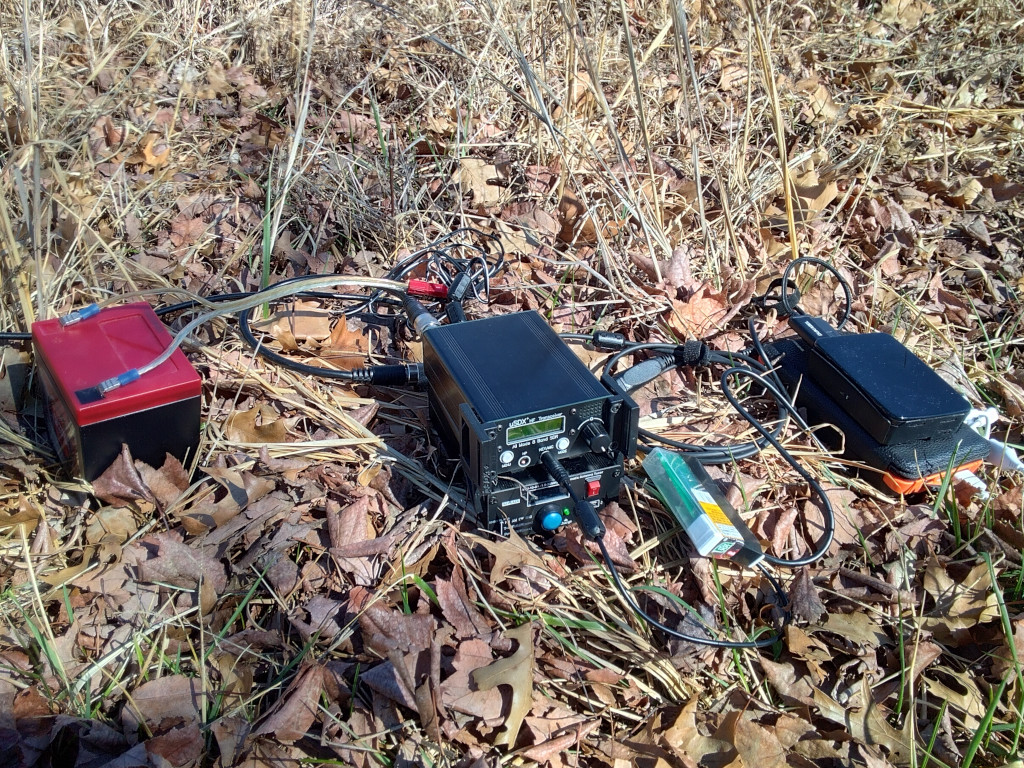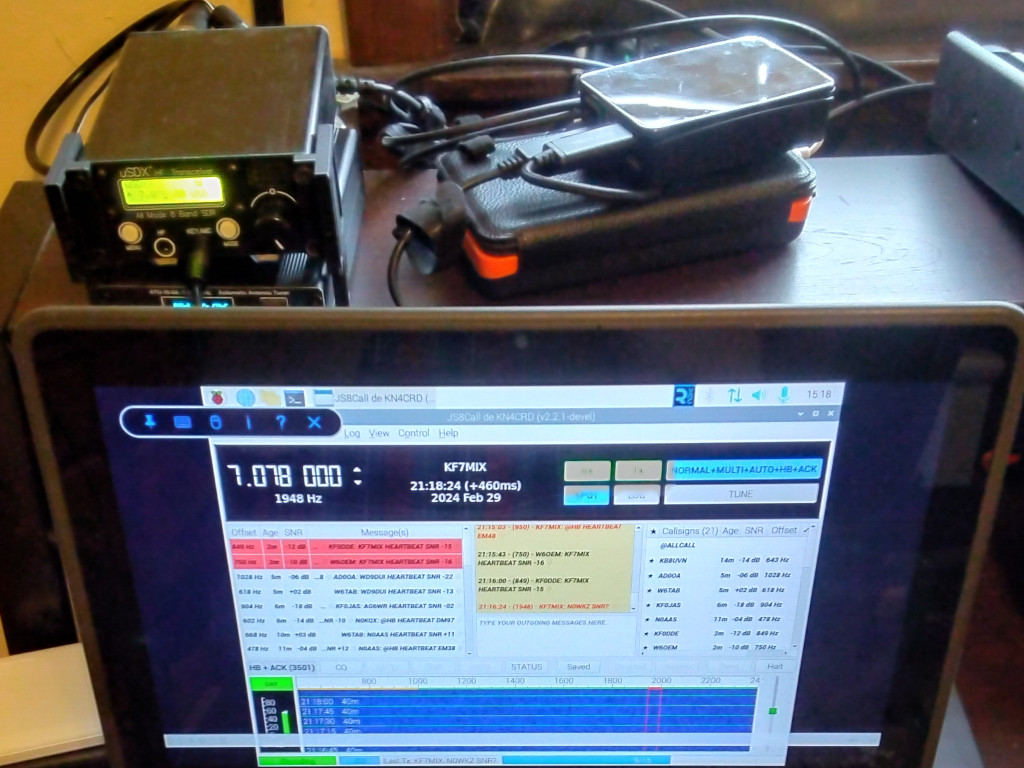A Complete JS8Call Setup in an Ammo Can
Ok, this experiment actually had nothing to do with an ammo can originally. At the beginning of this year I decided that I really needed to test my battery capacity, to see just how long I could operate JS8Call with the gear I own. You can read the detailed results of my first test here:
Power Down Exercise - Report (1/30/2024)
Or, for TL;TD folks: I ran a Thinkpad T410, swapped between a uSDX and G90, and used 12v 4Ah, 12v 20Ah, and 5v 2.5Ah batteries. I ran JS8Call with a reasonable duty cycle (transmitting throughout the day) for 10 consecutive hours. The 4Ah and 20Ah batteries went mostly into re-charging the Thinkpad, but were also used to power radios. The 5v battery was used to power the uSDX and a tuner. After those 10 hours, all of my batteries for keeping the computer going were gone.
Immediately after the January 30th exercise, my brain went into "you need to buy ____ to solve this" mode. But, I stopped it, and waited. Fast forward to the end of February, when I discovered that I had a Pi 3B sitting around not being used (long story) and decided to try something new with gear that I already owned... and experiment number 2 was born. You can read the detailed results of my second test here:
Power Down Exercise - Report (3/2/2024)
What I determined once I realized I had that Pi 3B sitting around was this: with JS8Call running headless on a super-low-power machine (especially compared to the thinkpad), I could access the screen/keyboard with a variety of different battery-powered devices. I gathered two old Kindle Fire tablets (one with keyboard), and a chromebook. I installed the headless pi, setup JS8Call, and got everything connected to the uSDX and running. Access was through RealVNC, which I had to download an old version of for the two de-googled and hacked Kindle fires.
For battery power, I put the uSDX on the 4Ah battery, and the Pi on the 2.5Ah 5v battery. I started with the chromebook and tablets fully charged (and was going to quit if/when they died). Testing commenced at 8am, and went til 8pm--and NONE of my batteries were depleted! I hadn't even touched the 20Ah battery, and the chromebook was still at over 70% capacity. That's 12 consecutive hours of operation, and it could have gone even longer (one day, I'd like to test the very limits, but we'll see when that will happen).
After writing up the second experiement, I looked at all the gear and thought, "I could easily fit this whole setup in an ammo can". To be clear, the chromebook was excluded in favor of one of the tablets, which fit nicely in there. I packed it all up with room to spare and lots of bonus items, and even took it out in the field to try it there (without having to even recharge). Photo below. Here's a list of what easily fit in the ammo can:
- uSDX "white buttons" radio
- ATU-10-0A automatic QRP tuner
- 15ft Coax cable
- 1ft Coax patch cable
- Baofeng 2m handheld radio (with extended battery, patch cable, rubber duck, and hand mic)
- USB type C cable
- USB multi-connection charging cable
- Hamgeek Mini-ANT HF verical antenna with manual tuner, with stand and whip case
- N9SAB 40m dipole antenna with bag and clips
- BTECH APRS-K1 and USB audio adapter (works for uSDX digial audio AND for APRS on the baofeng)
- PTT circuit (in Tictac container)
- uSDX 12v barrel connector to powerpole
- Buckboost 12v to 13.8v converter
- 5v USB to 12v barrel connector adapter
- 4Ah 12v LifePo4 battery, and powerpole connector
- 2.5Ah 5v battery pack with solar charger
- 4000mAh spare battery pack
- GPS dongle
- Raspberry Pi 3B
- Kindle Fire tablet with keyboard case
Honestly, I probably could have fit the second kindle in there. The thing that made me happiest about this particular ammo can packing job was, it included everything I would need to operate indefinitely. There was nothing in there to recharge the LifePo4, but the 5v 2.5Ah battery included a solar charger, and everything in there could be run off the 5v that it provides (not sure for how long per session, but it could work!) In a pinch, the 5v to 12v adapter might even be usable for charging the LifePo4 (which is verfy flexible for charging).
One thing I learned from all this is: you don't always need to buy more stuff to solve your problems. Sometimes you just need to look closely at what you have, and think of how you can put it to the best use. Another thing I learned is, you don't know what you don't know, until you try things out. Neither of these things is a revelation or original idea, but now I have part in their ownership.

